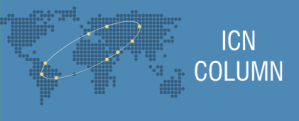
By Marianne Faessel (Autorité de la concurrence)1
As a global competition network, the International Competition Network (“ICN”) is keen to keep up with emerging competition issues in the digital economy, and to support its members in their efforts to tackle them. As part of that initiative, the ICN Cartel Working Group (“CWG”)2 conducts a project on the challenges raised by big data and algorithms in the fight against cartels, the “Big Data and Cartels Project.” Based on a review of existing sources and the input of ICN member agencies and non-governmental advisers, the CWG has produced a scoping paper on “The impact of digitalization in cartel enforcement.”3
The scoping paper is meant to foster debate among competition experts on how big data and algorithms impact cartel enforcement. It looks into data and algorithms both as a vehicle for collusion and as a tool for cartel detection.
It underlines the key notions at stake (big data and algorithms, as well as explicit collusion and tacit collusion) and reviews questions on the subject of collusion in connection with big data and algorithms: Are there new forms of cartels? Are the contours of explicit collusion less clear? How can enforcers meet the proper evidentiary standard to prove the existence of cooperation between firms?
The paper also identifies possible tools and means of action for competition enforcers to overcome the hurdles of digital cartels detection and investigation, including effective data management and cooperation with other public authorities.
Big Data and Algorithms as a New Type of Vehicle for Collusion
Algorithms can influence two structural factors of collusion: the frequency of interaction and market transparency. However, in most cases the conduct observed on the market is the result of individual, simultaneous use of algorithms by competitors, without any prior contact between them – something that may fall outside the scope of legal provisions prohibiting agreements between rivals. This situation presents challenges for competition authorities as they may not be able to find any “concurrence of wills” between the firms which use digital tools to set and adjust prices.
This raises the questions of whether the monitoring and adaptation capacities provided by big data and algorithms can be taken into account for the demonstration of the existence of a concurrence of wills, even in the absence of an explicit contact, and whether the level of market transparency allowed by such technology alters methods for analyzing documentary evidence by competition authorities.
When it comes to the evidentiary standard to prove that firms have not acted independently, it seems relevant to assess whether the consciousness of the collusive outcome can be sufficient to fall within the provisions on anti-competitive agreements and if presumptions can be applied.
The restrictive nature of agreements also leads to questions about market structures: should they be integrated as an economic context into the definition of restriction of competition? Should they be considered as potential evidence used to demonstrate the manifestation of will?
Another crucial consideration is liability. Since firms might apply the algorithm’s autonomous decisions, when shall an algorithm be deemed to remain under the firm’s control? Should the company that developed the algorithm and the beneficiary firm both be found liable? How can agencies establish the duration/continuity of the practice? Should IT companies be considered as facilitators in certain circumstances?
Beyond the case of explicit collusion, there are similar questions about tacit collusion. The parallel use of identical or similar algorithms may give rise to the applications of identical prices and commercial conditions by different economic operators, in particular when algorithms include predictive features. In such a configuration, should collusion, resulting from algorithm or big data use, give rise to an antitrust prosecution? Under what conditions?
Detecting Cartels with Big Data and Algorithms
There are challenges to digital cartels detection and investigation such as the apprehension of large volumes of data, the localization of digital information as well as cartel screening and the fight against bid rigging.
For this reason, cooperation is encouraged with actors outside competition authorities like public procurement authorities, anti-corruption and anti-fraud bodies, as well as criminal enforcement authorities in order to have access to additional data sets and to share techniques and methodologies in data analysis.
In conclusion, the paper recognizes the importance of advocacy, for example by disseminating a competition culture to those who design and use tenders or by fostering the development of electronic procurement policies by national authorities.
Click here for a PDF version of the article
1 Adviser for Institutional & International Affairs with the Office of the President at the Autorité de la concurrence.
2 The French Autorité de la concurrence, the Russian FAS, and the Italian AGCM are co-chairs of the CWG. The scoping paper on big data and cartels was produced under the leadership of the French Autorité de la concurrence.
3 The scoping paper on big data and cartels is available on the ICN’s website at https://www.internationalcompetitionnetwork.org/wp-content/uploads/2020/06/CWG-Big-Data-scoping-paper.pdf.
